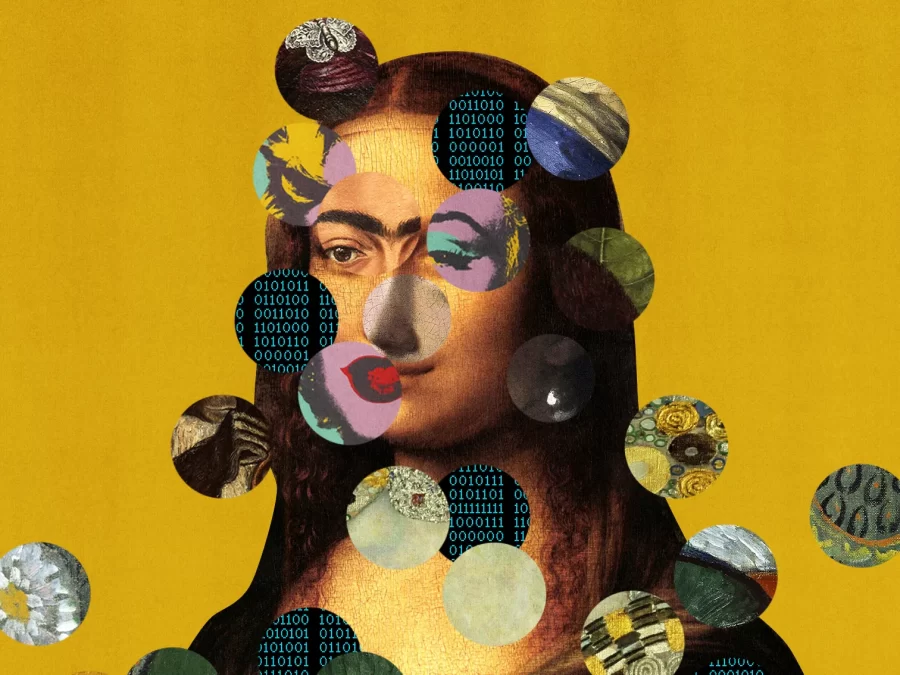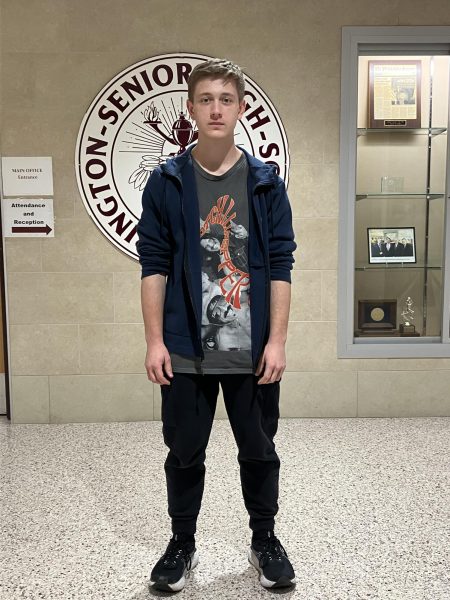Fear of AI Art is Just a Lack of Appreciation
April 27, 2023
The idea that robots and artificial intelligence will take over humanity has been in culture for decades. Movies like IRobot dramatize the fear of such an outcome; having a future where we have to do very little for ourselves as AI does it all for us, only for those AI helpers to try and destroy the world. Not only does it represent a cultural fear of AI replacing us, but so much AI horror media has a similar theme that what humans have that robots can’t is human emotion. One of the main ways humans express this emotion is through art, whether it be drawing, painting, music, animation, and many more. However, the belief that AI could never obtain our sophisticated craftsmanship is starting to be challenged. Just one Google search nets multiple accessible AI that can create an image or song in many styles and genres in seconds, and this advancement has ignited a new type of fear in people. Ask anyone what they think about this new technology and many if not most will include in their response something along the lines of “it’s scary”. Many worry that artists are under threat from this innovation, and they will disappear like how artisan weavers were phased out after the invention of the power loom. As a musician who has an intense appreciation for the arts and the work and skill that goes into creating them, my research has led me to conclude that AI is under no circumstance a threat to art.
Starting with AI-generated pictures, it is incredibly impressive how a computer program can generate original, highly detailed images in so many different styles. While technically being “original”, these images lack unique character. AI works exclusively off of what came before, using art from previous artists to emulate a style and in turn creating either a very incorrect or boring depiction of what you type in. If I asked Michelangelo to create a grand painting of a scary distorted shark eating a medieval castle in heavenly skies, it would probably be jaw-droppingly glorious, but when I told Hotpot.ai to do it, it just made a dumb-looking twelve-finned shark with a splattering of gray and red in its mouth. Although the picture is highly detailed and not at all ugly, it’s just really lame. It would take a great deal of skill for a human to recreate such an image, but it’d be like Stephen King using his writing talents to create a directory for a small Kansas town. Next, I tried giving a more general prompt to the AI to see if it improved. Instead, the complete opposite happened. I told it to create an image of “a duel for the ages” and half the pictures were weird and messy DND-animorph people in a cave. One of the images was just two guys on rock hill not even fighting each other. Another was a knight, half of their body cut off by the image, holding a flaming sword that just kinda looked like a sword with orange fuzz on it. Overall, the AI never created anything close to what I wanted it to. However, if someone showed me the best pictures it made out of context, I would say it was pretty good. Still, even the best art I’ve seen AI still has a massive issue that keeps it from reaching what us humans can achieve.
AI music is almost exactly as I expected it to sound like. Despite the possibility for music to have such great emotion put into it, music can be written very robotically. Only twelve notes exist in an octave, and the chord, rhythm, and scale theory within a genre or multiple genres should, in my head, be understandable to an AI. After using X.AI, I’ve learned that it is. It gave me a selection of genres and the adjectives like “smooth” or “creepy” to add to the songs the AI was about to produce. Based on a singular genre and adjective, it was able to create basic, boring royalty-free music; the definition of music that’s just “there” when you watch a presentation or information video. None of it’s good, but it doesn’t hurt to listen to unless you start putting multiple genres and adjectives together in the AI, which always comes out like a lofi beat with a hyperactive five-year-old learning the piano in the background. Creating customizable royalty-free tracks is cool and fun to play around with, but as far as practical use goes, it’s royalty-free music. Thousands of these songs already exist for every genre under the sun for free, but if you really care about customizing music for an informational video or something of the like, it’s not like you are taking away an opportunity for a composer to do their job.
Some people agree that AI art in the state it’s in right now is not a threat to artists, but argue that if the technology keeps advancing, it eventually will. However, I still don’t think AI can surpass artists because it lacks the most important aspect of art: originality. AI inherently has to have previous works to generate art, and whenever the AI would produce something impressive, it felt like I have seen it before from other popular masterpieces. For the AI to depict something, it has to be something that has been a basic concept similarly depicted hundreds and hundreds of times, so even if the art is competent, it’s just boring. If you’re looking for some basic, inoffensive, royalty-free art to use, google images is right there. On top of that, there are many other types of art that AI can’t even begin to replicate such as sculpture, animation, or acting. None of this is to say that I hate AI or that it has no reason to exist. The technology is incredibly cool, but people that think AI art is scary and that it should be stopped, or that artists should be replaced by AI, aren’t appreciating art enough.


